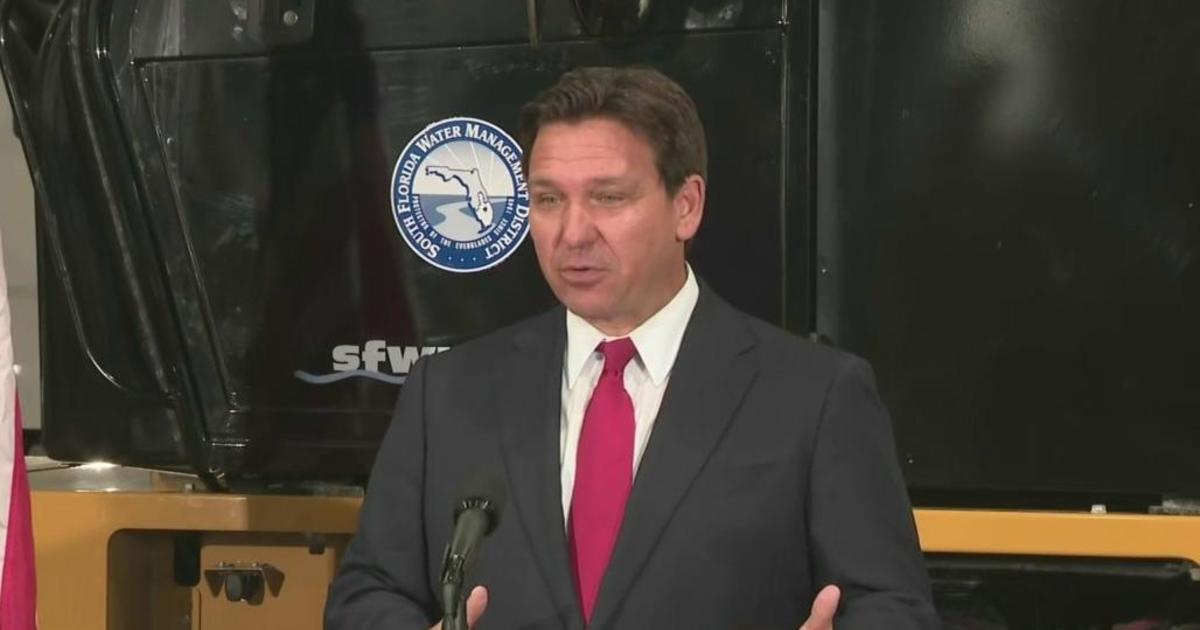Broad Romney Budget Outline Draws Scrutiny
MIAMI (CBSMiami) – One of the problems facing presumptive Republican presidential nominee Mitt Romney has been how he would pay for his massive tax cuts and vows to cut government spending and services.
Romney told CNNMoney.com Wednesday that part of his savings would come from eliminating the Amtrak subsidy, the PBS subsidy, the National Endowment for the Arts subsidy, and the National Endowment for the Humanities subsidy, but taken together these make up a small part of the budget.
According to the Washington Post, Romney's promised to have federal spending below 20 percent of GDP by 2016 and that at least 4 percent of that federal spending will be on defense. Then, Romney has vowed to cap federal spending at 20 percent of GDP.
Romney has also said that he will have a balanced budget while President. Romney also has promised to exempt Social Security from the cuts and keep or increase defense spending. The numbers paint a very bleak picture for many if Romney's proposals were enacted.
According to the Center on Budget and Policy Priorities, based on Romney's plans, non-defense programs outside of Social Security and Medicare would have to be cut by 29 percent in 2016 and by 59 percent by 2022. The CBPP said that if the balanced budget requirement was excluded, the cuts would still reach 40 percent.
The CBPP said, "The cuts in Medicare and Medicaid would make health insurance unaffordable (or unavailable) to tens of millions of people. The cuts in non-defense discretionary programs — a spending category that covers a wide variety of public services such as elementary and secondary education, law enforcement, veterans' health care, environmental protection, and biomedical research — would come on top of deep cuts in this part of the budget that are already in law due to the discretionary funding caps established in last year's Budget Control Act."
According to the CBPP, Romney's cuts to programs outside of Social Security and defense would total between $7 and $10 trillion from 2014-2022. The Ryan budget, which had severe cuts as well, would require cuts of roughly $5 trillion over the same time frame.
Additionally, the CBPP found that by 2022, Romney's cuts would "shrink non-defense discretionary spending – which over the past 50 years, has averaged 3.9 percent of gross domestic product and has not fallen below 3.2 percent – to between 1.1 and 1.6 percent of GDP."
The cuts as outlined by the CBPP analysis would include cutting $1.36 trillion from Medicaid and CHIP between 2014-2022, cutting $491 billion from the federal retirement, cutting $225 billion from veterans disability compensation and other entitlement benefits for veterans.
Additionally, Romney has vowed to repeal the Affordable Care Act which the Congressional Budget Office reported in July would raise the deficit by approximately $109 billion.
The Romney campaign has so far refused to release any specific details about what it will cut to achieve its budget goals. But, based on the CBPP analysis, the cuts may not see the light of day because getting them past a 60-vote supermajority in the Senate may be nearly impossible.



